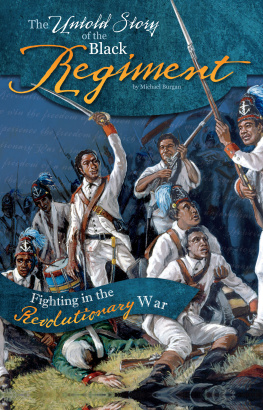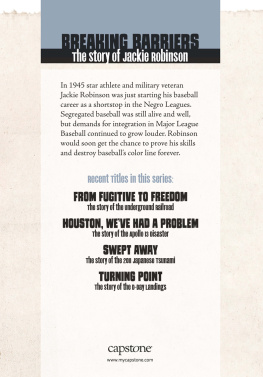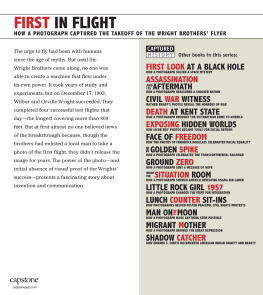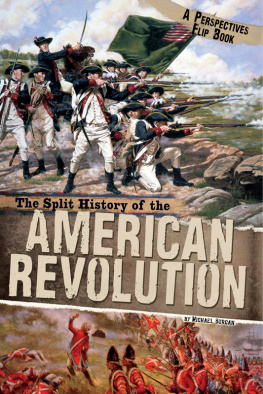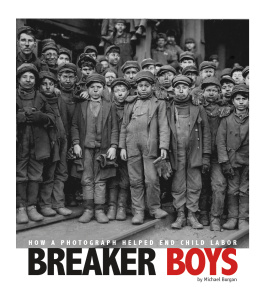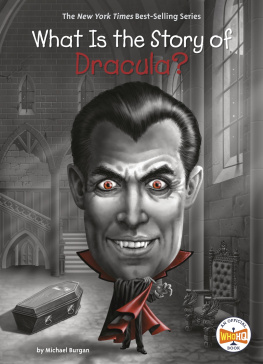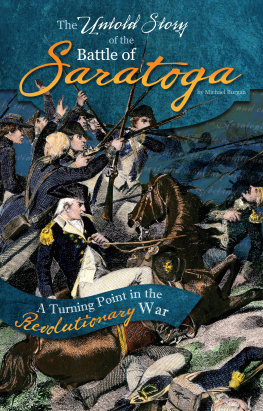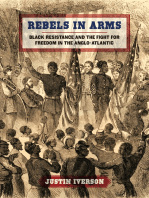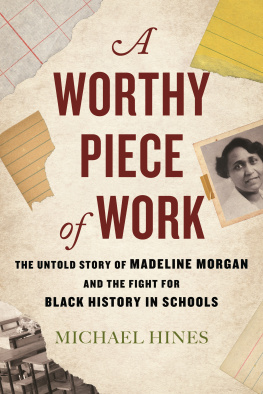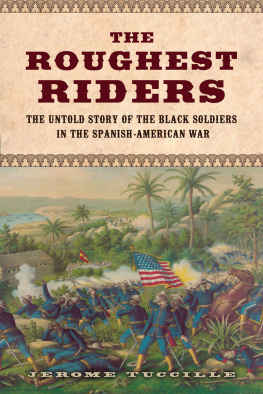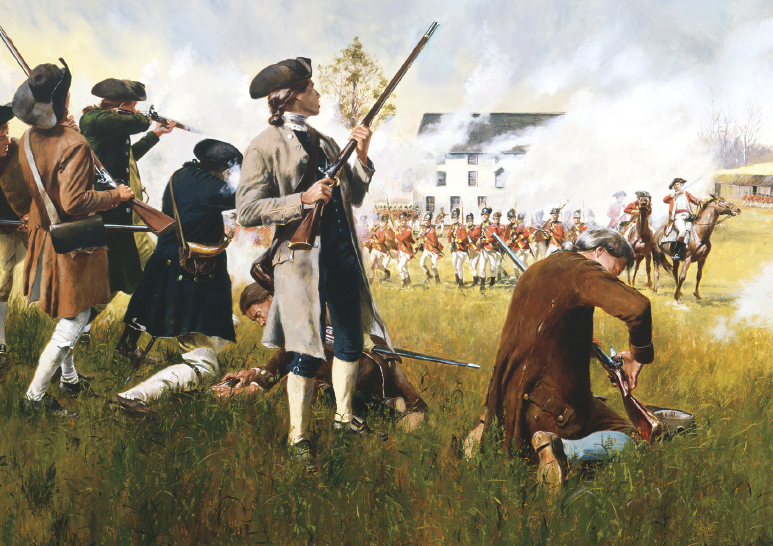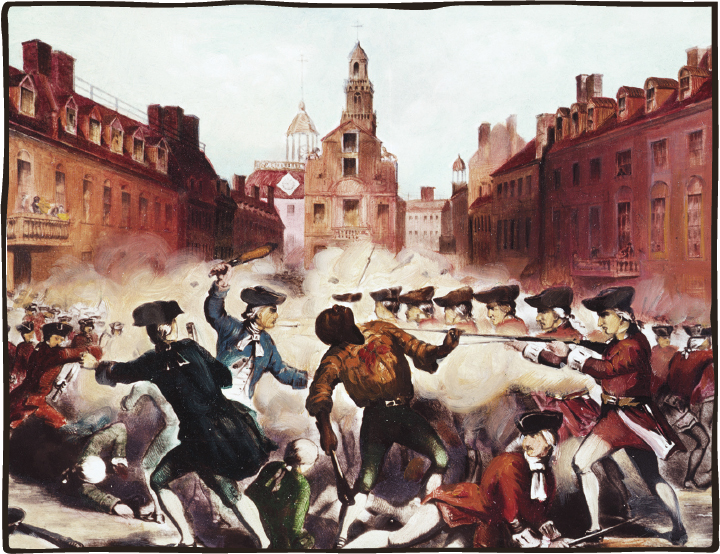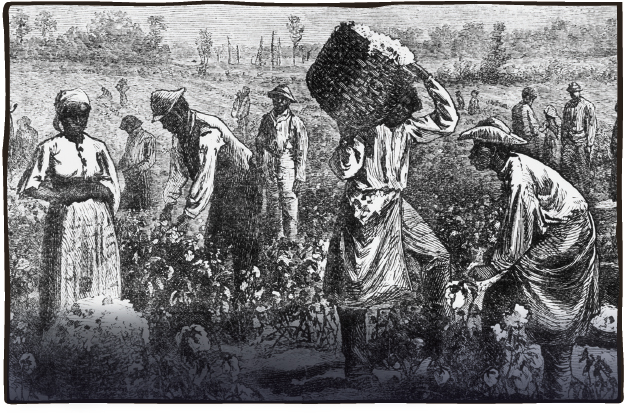Michael Burgan has written more than 250 books for children and teens, mostly onU.S. history. He specializes in the Colonial era and the period just before and afterthe American Revolution. Michael lives in Santa Fe, New Mexico.
CHAPTER One
The Road to War
A drumbeat broke the early morning silence in Lexington, Massachusetts, on April 19, 1775. The steady rhythm was an alarm, telling the townspeople that British soldiers were approaching. The grabbed their guns and headed off to meet the advancing troops.
Among the 70 or so men who answered the drummers call was Prince Estabrook, a black slave. With the permission of his master, Estabrook had volunteered to join the Lexington militia and was ready to fight the British if war came. No one had promised Estabrook his freedom in return for risking his life. He did it out of patriotism, although he did win his freedom by the end of the war. Estabrook also earned the distinction of becoming the first black man to fight in the Revolutionary War. When he and the other militiamen confronted the British that fateful morning, the Revolutionary War officially began.
When the first shots of the Battle of Lexington rang out, approximately 70 militiamen from Massachusetts, including Prince Estabrook, participated in the battle.
For Estabrook and other slaves, the Revolutionary War gave them the chance to gain their freedom. Across the 13 colonies, thousands of blacks bravely served during the War of Independence.
Anger Turns to Violence
The roots of the Revolutionary War reached back more than a decade before the Battle of Lexington. After winning the French and Indian War (17541763), Great Britain took control of all of Frances territory in Canada and its holdings east of the Mississippi River. During that war both white and black soldiers from Britains 13 American Colonies helped battle the French. But instead of being grateful for their service, charged the Americans higher taxes to help Great Britain defend its new lands.
In 1764 a law called the Sugar Act imposed a tax on sugar and molasses in the American Colonies. Some colonists wrote articles and pamphlets and sent written protests to Parliament protesting the Sugar Act.
Americans grew even angrier the next year when Parliament passed the Stamp Act. This law introduced a new tax on paper goods and documents. Colonists in Boston felt they were being unfairly taxed without receiving proper representation in Parliament. At times the protests against the taxes and British policies turned violent, which in 1768 led Englands King George III to send troops to Boston to restore order. Patriots there despised the soldiers, especially when they tried to earn extra money by taking jobs away from residents.
The anger boiled over on the night of March 5, 1770, in what came to be known as the Boston Massacre. When a few young men insulted a British soldier on guard duty, the soldier struck one of them with his gun. When the injured man cried out in pain, more residents and soldiers poured into the street. The angry American crowd swarmed to about 400 people. Leading them was a man named Crispus Attucks.
Two British soldiers were found guilty of following the Boston Massacre. As punishment, their hands were branded with the letter M.
Attucks was the son of an African father and an American Indian mother. Like most blacks in the American Colonies, Attucks had once been a slave. But he had escaped from his master 20 years earlier and had lived as a free man ever since.
Attucks allegedly pushed aside the bayonet on a soldiers gun and then knocked him to the ground. All around them, Americans threw snowballs, and some swung sticks. Panicked and outnumbered, the British soldiers fired into the crowd. Attucks and four other men died from gunshot wounds.
Most slaves in Colonial America lived in the South. Many worked on large plantations picking tobacco and later cotton, as seen here.
Blacks in Colonial America
To many patriots, Attucks was a hero during the Boston Massacre because he had stood up to the British soldiers who often bullied Americans. But for most blacks across the American Colonies, freedom was just a word. In their daily lives, black men, women, and children worked as slavesthe property of another person. Conditions for enslaved people varied across the colonies, but slavery existed in each one. Merchants got rich by bringing slaves from Africa or the Caribbean to America.
The first African slaves had come to North America with Dutch explorers in 1619, arriving in Virginia. Although they had been captured from a slave ship, some went to work as , who were able to earn their freedom after serving a master for a number of years.
In the 18th century, the number of slaves in the South exploded. By some accounts, in 1763 slave masters in the Carolinas, Maryland, and Virginia owned 85 percent of the slaves in the American Colonies. In 1770 in Virginia alone, there were about 200,000 slaves working in the fields harvesting tobacco and other crops.
The estimated population of blacks in the American Colonies at that time was about 500,000which was roughly 20 percent of the entire Colonial population. Only about one in four whites owned slaves, meaning that some people owned many to operate their large plantations. Slaves were routinely subject to beatings, and many were killed to set an example to others to obey their masters. Families were often torn apart as children were taken away from their parents and sold to other masters.
Population of Colonial America at
the Start of the Revolutionary War (1775) |
| Region | White | Black | Percentage of
Total Population |
| New England |
Connecticut, Massachusetts,
New Hampshire, Rhode Island,
Vermont | 97% | 3% | 26% |
| Mid-Atlantic |
New Jersey, New York,
Penns lvania | 94% | 6% | 24% |
| Upper South | 63% | 37% | 31% |
| Delaware, Maryland, Virginia |
Lower South
Georgia, North Carolina,
South Carolina | 59% | 41% | 17% |
| West | 83% | 17% | 1% |
| Kentucky, Tennessee |
| Total Population | 79% | 21% | 100%* |
| Population | 1.94 million | 520,000 | 2.46 million |
*Note: 1775 figures averaged from 1770 and 1780 figures.
Percentages do not add to 100 because of rounding.
Source: Lemon, James T., Colonial America in the Eighteenth Century, p. 123 |
Slave owners who lived in cities or ran small farms usually owned only a few slaves. The slaves in cities typically worked in their masters homes or as laborers. Their jobs might involve making bricks or working on ships. Some slaves brought skills they had learned in Africa, such as carpentry, growing rice, and working with iron.

